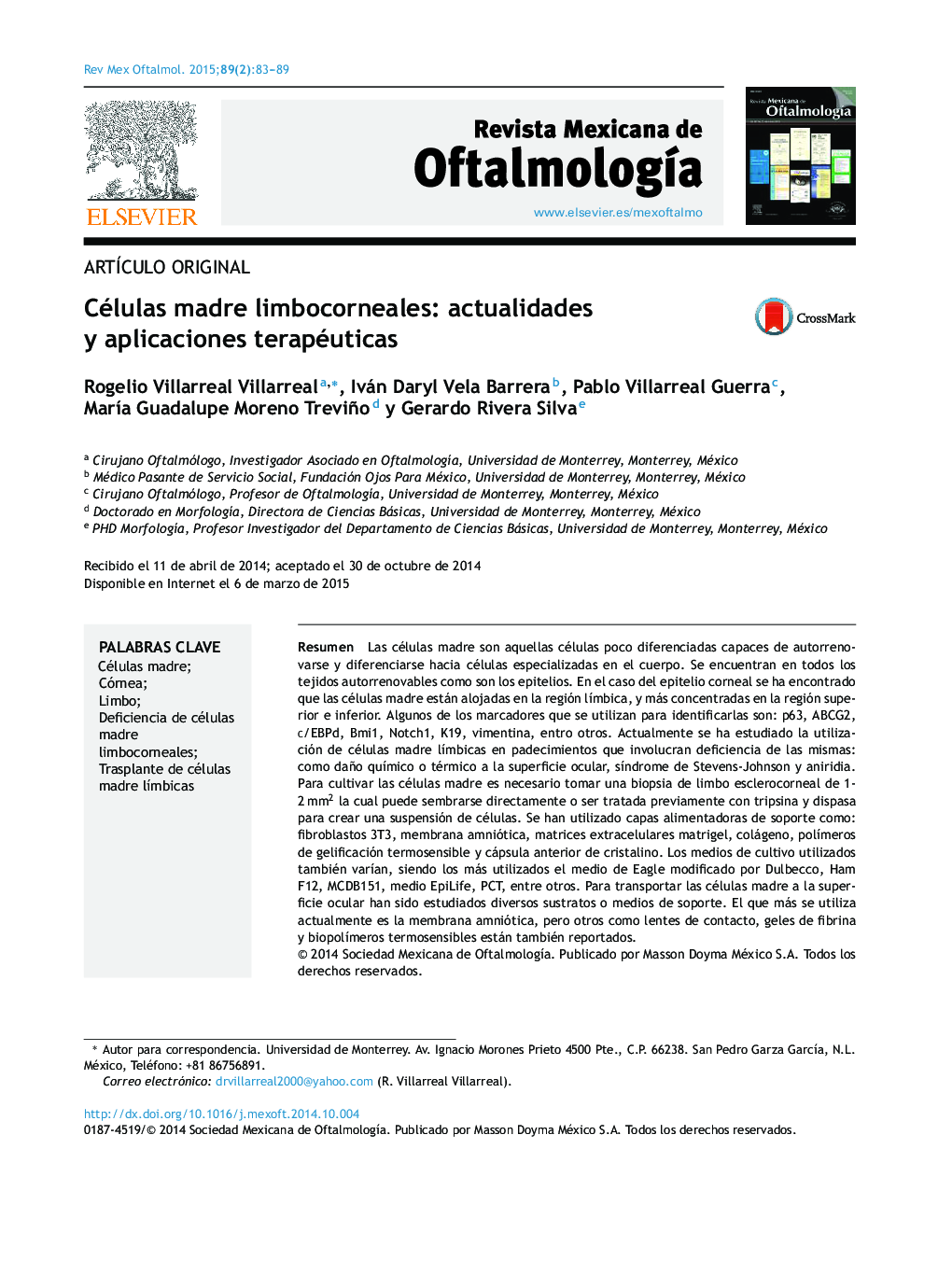| کد مقاله | کد نشریه | سال انتشار | مقاله انگلیسی | نسخه تمام متن |
|---|---|---|---|---|
| 4032273 | 1263041 | 2015 | 7 صفحه PDF | دانلود رایگان |

ResumenLas células madre son aquellas células poco diferenciadas capaces de autorrenovarse y diferenciarse hacia células especializadas en el cuerpo. Se encuentran en todos los tejidos autorrenovables como son los epitelios. En el caso del epitelio corneal se ha encontrado que las células madre están alojadas en la región límbica, y más concentradas en la región superior e inferior. Algunos de los marcadores que se utilizan para identificarlas son: p63, ABCG2, C/EBPd, Bmi1, Notch1, K19, vimentina, entro otros. Actualmente se ha estudiado la utilización de células madre límbicas en padecimientos que involucran deficiencia de las mismas: como daño químico o térmico a la superficie ocular, síndrome de Stevens-Johnson y aniridia. Para cultivar las células madre es necesario tomar una biopsia de limbo esclerocorneal de 1-2 mm2 la cual puede sembrarse directamente o ser tratada previamente con tripsina y dispasa para crear una suspensión de células. Se han utilizado capas alimentadoras de soporte como: fibroblastos 3T3, membrana amniótica, matrices extracelulares matrigel, colágeno, polímeros de gelificación termosensible y cápsula anterior de cristalino. Los medios de cultivo utilizados también varían, siendo los más utilizados el medio de Eagle modificado por Dulbecco, Ham F12, MCDB151, medio EpiLife, PCT, entre otros. Para transportar las células madre a la superficie ocular han sido estudiados diversos sustratos o medios de soporte. El que más se utiliza actualmente es la membrana amniótica, pero otros como lentes de contacto, geles de fibrina y biopolímeros termosensibles están también reportados.
Stem cells are those poorly differentiated bodily cells capable of self-renewing and differentiating into specialized cells in the human body. They can be found in all self-renewing tissues like epithelia. It is well known that in corneal epithelium stem cells are housed in the limbal region, more concentrated in the upper and lower corneal limbus. Some of the markers that have been used to identify them are: p63, ABCG2, C/EBPd, Bmi1, Notch1, K19, vimentin, among others. Currently, research has been made on the use of limbal stem cells to treat conditions that involve their deficiency, such as: chemical or thermal damage to the ocular surface, Stevens-Johnson syndrome, and aniridia. To culture stem cells it is necessary to take a 1-2 mm2 biopsy from the sclerocorneal limbus which can be directly seeded or previously treated with trypsin and dispase to create a cell suspension. Feeder layers have been used as scaffold based on 3T3 fibroblasts, amniotic membrane, matrigel extracellular matrix, collagen, thermosensible gelation polymers, and anterior lens capsule. Culture media also vary, being the following the most used: Dulbecco's modified Eagle medium, Ham F12, MCDB151, EpiLife medium, PCT, etc. Various substrates have been studied to transport stem cells to the ocular surface. Amniotic membrane has been the most used to date, but others such as contact lenses, fibrin gels, and thermosensible biopolymers have also been reported
Journal: Revista Mexicana de Oftalmología - Volume 89, Issue 2, April–June 2015, Pages 83–89